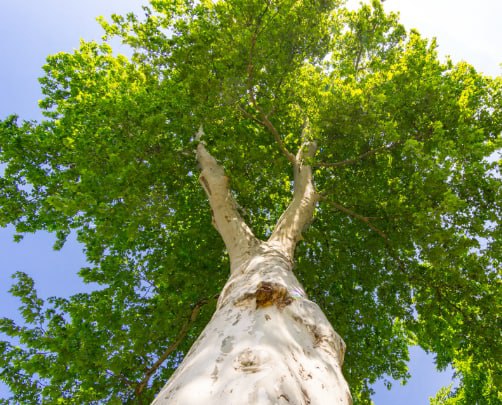
Introduction: In the quest for sustainable urban living, green roofs have emerged as a powerful solution for mitigating environmental challenges such as urban heat islands, stormwater runoff, and air pollution. By incorporating vegetation into the built environment, green roofs offer numerous benefits, including improved air quality, reduced energy consumption, and enhanced biodiversity. However, to maximise the effectiveness of green roofs, careful consideration must be given to integrating existing trees. In this blog post, we’ll explore the importance of tree reshaping for green roof integration and how Tenterden Tree Surgeons can help enhance urban sustainability through thoughtful tree management practices.
Preserving Urban Canopy:
Trees are essential for urban landscapes, providing numerous environmental, social, and economic benefits. However, space is often limited in dense urban areas, making it challenging to accommodate trees and green roofs. Tree reshaping offers a solution for preserving urban canopies while integrating green roofs into the built environment. By carefully reshaping trees to reduce canopy size and optimise growth patterns, tree surgeons can create space for green roof installations without sacrificing valuable tree cover. Preserving urban canopy through tree reshaping enhances the aesthetic appeal of green roofs and maximises their ecological and social benefits for urban communities.
Enhancing Biodiversity:
Green roofs are vital in promoting biodiversity in urban environments, providing habitat for a wide range of plant and animal species. However, green roofs must be integrated with existing urban green spaces, including trees, to support diverse and resilient ecosystems. Trees within green roof environments offer additional habitat features such as perches, nesting sites, and food sources for birds, insects, and other wildlife. Tree reshaping can help facilitate this integration by creating open, accessible spaces for tree planting and establishing green roof systems around existing trees. By strategically reshaping trees to accommodate green roofs, tree surgeons can enhance biodiversity and create more vibrant and ecologically valuable urban landscapes.
Mitigating Urban Heat Islands:
Urban heat islands are areas within cities that experience higher temperatures than surrounding rural areas due to the heat-absorbing properties of built materials and lack of vegetation. Green roofs help mitigate urban heat islands by providing shade, reducing surface temperatures, and promoting evaporative cooling. However, green roofs must be strategically located and integrated with existing tree canopies for maximum cooling benefits. Tree reshaping can help optimise the placement and orientation of green roofs relative to existing trees, maximising shade coverage and cooling effects. By reshaping trees to complement green roof installations, tree surgeons can create cooler, more comfortable urban environments for residents and visitors alike.
Improving Air Quality and Stormwater Management:
Trees and green roofs work together to improve air quality and manage stormwater runoff in urban areas. Trees capture air pollutants, filter particulate matter, and absorb carbon dioxide, helping to purify the air and mitigate the effects of air pollution. Green roofs absorb rainfall, reduce runoff, and filter pollutants from stormwater, preventing water pollution and reducing the burden on urban drainage systems. Tree reshaping can help enhance these synergistic relationships by creating space for green roofs to capture and treat stormwater runoff while preserving trees’ air-purifying and cooling benefits. By strategically reshaping trees for green roof integration, tree surgeons can optimise the environmental performance of urban green infrastructure and contribute to healthier, more sustainable cities.
Conclusion: To enhance urban sustainability and resilience, tree reshaping is vital in integrating trees with green roofs. By partnering with experts for expert tree reshaping services, urban planners, developers, and property owners can maximise green roof installations’ ecological, social, and economic benefits while preserving and enhancing urban tree canopy. If you’re involved in the design or implementation of green roof projects, consider investing in tree reshaping to optimise the performance and compatibility of green roofs with existing trees. Together, we can harness the power of nature to create greener, healthier, and more sustainable cities for generations to come.
Call us on: 01580 234692
Click here to find out more about Tenterden Tree Surgeons
Click here to complete our contact form and see how we can help with your tree’s needs.